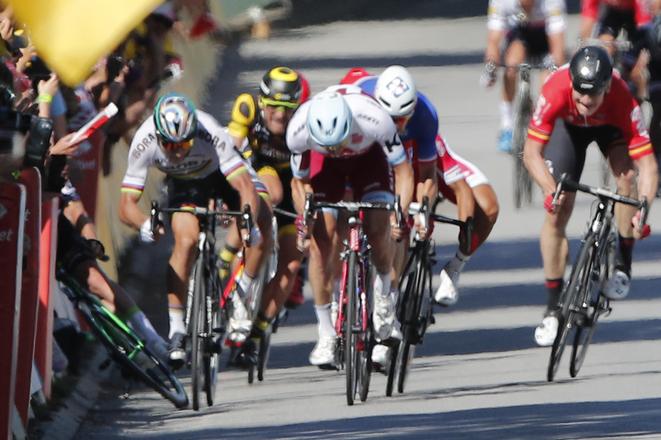Slovak cyclist Peter Sagan did not intentionally elbow Mark Cavendish during this year’s Tour de France, causing him and other racers to fall. The incident occurred about 50 metres before the finish line of the fourth stage from Mondorf-les-Bains to Vittel in early July 2017. Cavendish crashed into the barriers at a speed of more than 50 kilometres per hour and fell to the ground. Following the incident, Sagan was disqualified from the race.
The Bora-Hansgrohe team immediately protested after Sagan was removed. However, the objections were rejected. Nobody was willing to admit that Sagan did not cause the crash deliberately.
The first video-shots may have even supported this theory but gradually, Bora collected materials and video that clearly show this was a mishap. Thanks to this, the dispute with the International Cycling Union (UCI) could be settled even before the arbitration proceeding is concluded, the Sme daily reported on December 5.
UCI admitted failing
Both Bora and UCI agreed that the referees made “the best decision under the due circumstances”, since they did not have better recordings at their disposal. The settlement means that the cycling union acknowledges its failing.
One of the facts that may have helped settle the dispute is that the UCI has a new president: David Lappartient did not want to start his term with a scandal.

“This case showed us how important and demanding the work of the UCI is,” Lappartient said, as cited by Sme. “So we plan to introduce from next season the function of referees’ assistant, who will offer an expertise in videos, and so support their work in main World Tour events.”
A video-referee could bring more objectivity to the cycling races. But they will probably be just an expert who should render the best data to jurors so that they can decide objectively.
Sagan has long managed his disqualification
Almost all major sports already use modern technologies: in tennis, this is the “hawk-eye”, in ice-hockey they use video-referees. Football (soccer) has a technology that can determine whether a goal was scored, even if the referee did not see it. This idea was expressed as early as July by the man who announced the disqualification of Sagan, referee head at the Tour – Philippe Marien.
“It should be the way it works in football,” Marien told the Het Nieuwsblad daily. “The video-referee should follow the sprints on TV, and the decision could be made virtually immediately… And not later, as is the case now.”

Peter Sagan has long handled and come to terms with the disqualification from this year’s Tour de France, and did not linger over it. He is happy with the way the whole case ended, though, and that in the future, he may not have to face disqualification in a similar situation.
“I may be over it now,” Sagan said, as quoted by Sme. “UCI found out, also based on this case, that it has to make the work of referees easier. From this point of view, I welcome this and I'm happy that my case will contribute to development. It's important to be able to make the right decision even in moments when emotions are involved.”



 Peter Sagan, left, sprints as Britain's Mark Cavendish crashes, during the sprint of the fourth stage of the Tour de France cycling race. (source: AP/TASR)
Peter Sagan, left, sprints as Britain's Mark Cavendish crashes, during the sprint of the fourth stage of the Tour de France cycling race. (source: AP/TASR)